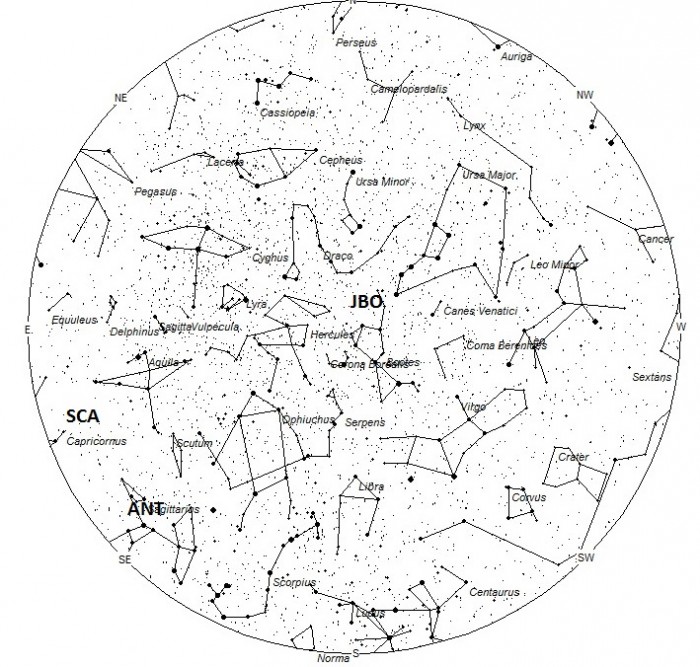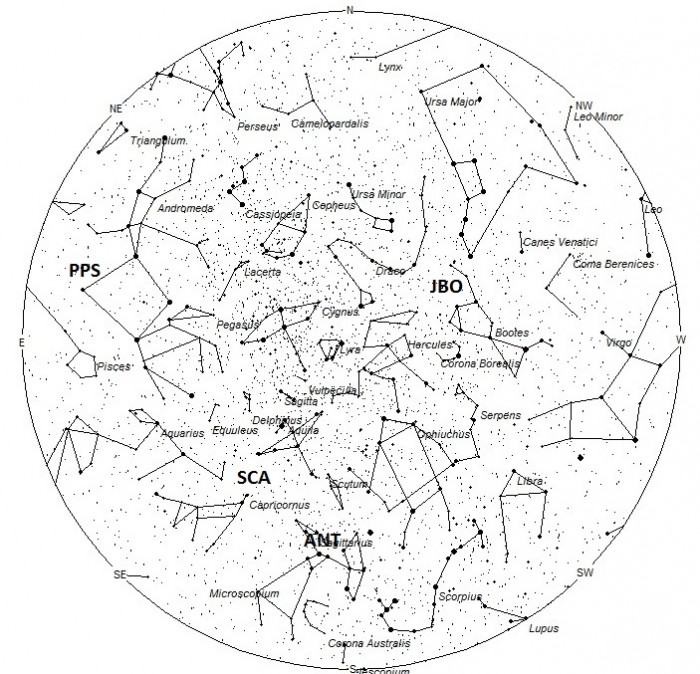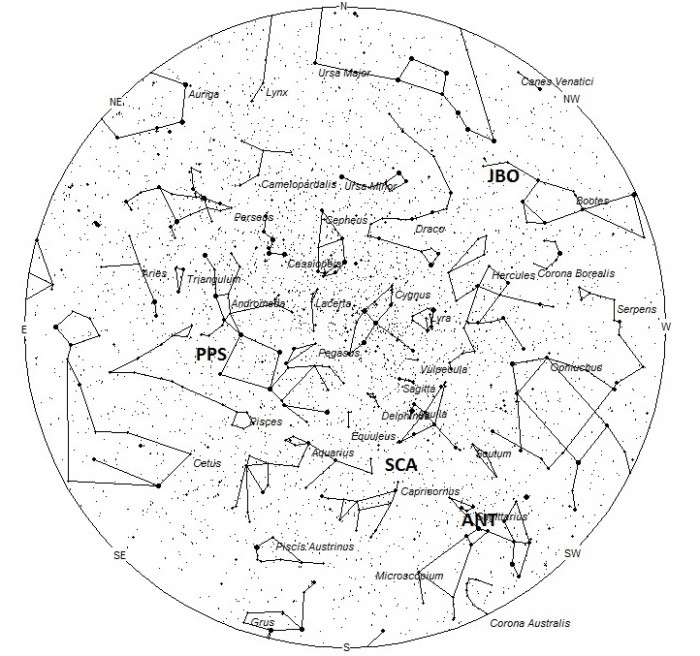During this period the moon reaches its full phase on Sunday June 23th. At this time the moon is located opposite the sun and remains above the horizon for most of the night. As the week progresses the waning gibbous moon will rise later and later but will still be high in the sky during the more active morning hours, reducing the number of meteors to be seen. The estimated total hourly meteor rates for evening observers this week is near two as seen from the northern hemisphere and three as seen from south of the equator. For morning observers the estimated total hourly rates should be near four as seen from the northern hemisphere and six as seen from the southern hemisphere. The actual rates will also depend on factors such as personal light and motion perception, local weather conditions, alertness and experience in watching meteor activity. Rates are reduced during this period due too intense moonlight.
The radiant (the area of the sky where meteors appear to shoot from) positions and rates listed below are exact for Saturday night/Sunday morning June 22/23. These positions do not change greatly day to day so the listed coordinates may be used during this entire period. Most star atlases (available at science stores and planetariums) will provide maps with grid lines of the celestial coordinates so that you may find out exactly where these positions are located in the sky. A planisphere or computer planetarium program is also useful in showing the sky at any time of night on any date of the year. Activity from each radiant is best seen when it is positioned highest in the sky, either due north or south along the meridian, depending on your latitude. It must be remembered that meteor activity is rarely seen at the radiant position. Rather they shoot outwards from the radiant so it is best to center your field of view so that the radiant lies at the edge and not the center. Viewing there will allow you to easily trace the path of each meteor back to the radiant (if it is a shower member) or in another direction if it is a sporadic. Meteor activity is not seen from radiants that are located below the horizon. The positions below are listed in a west to east manner in order of right ascension (celestial longitude). The positions listed first are located further west therefore are accessible earlier in the night while those listed further down the list rise later in the night.
The table below presents a list of radiants that are expected to be active this week. Rates and positions are exact for Saturday night/Sunday morning. The detailed descriptions of each shower will continue next week when the moon is not such a factor.
| SHOWER | DATE OF MAXIMUM ACTIVITY | CELESTIAL POSITION | ENTRY VELOCITY | CULMINATION | HOURLY RATE | CLASS |
| RA (RA in Deg.) DEC | Km/Sec | Local Daylight Time | North-South | |||
| June Bootids (JBO) | Jun 27 | 14:48 (222) +49 | 18 | 22:00 | <1 – <1 | III |
| Anthelions (ANT) | – | 18:56 (284) -22 | 30 | 02:00 | 1 – 2 | II |
| Sigma Capricornids (SCA) | Jun 27 | 20:08 (302) -08 | 42 | 03:00 | <1 – <1 | IV |
| Phi Piscids (PPS) | Jul 01 | 00:28 (007) +20 | 69 | 07:00 | <1 – <1 | IV |
 American Meteor Society
American Meteor Society



We saw a meteor in the early morning of June 27, 2013. It was about 0600 Central African Time. We were in the Southern Hemisphere at Hwange National Park in Zimbabwe. The meteor appeared to be moving from east to west. Can anyone tell me if that was a late June Bootid or an Anthelions or a Sigma Capricornid?
Marsha and All,
Your time and directions do not fit any of the showers you listed. It was most likely a random (sporadic) meteor.
Robert Lunsford
American Meteor Society